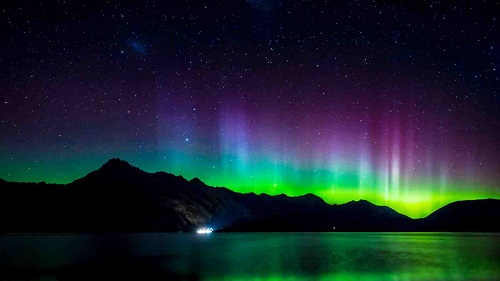THURSDAY, OCTOBER 26, 2017
New research out of New Zealand supports the contention that solar storms may promote corrosion in pipelines with damaged coatings, and can negatively impact the electrical networks the globe depends upon to keep technology running.
Researchers based out of the Victoria University of Wellington and the University of Otago report that geomagnetic storms can cause corrosion in New Zealand’s pipelines, with some areas more vulnerable than others.
Pipeline Corrosion
According to Otago’s Professor Craig Rodger, when a solar eruption from the sun hits Earth, what results are rapid changes in the planet’s magnetic field, also known as a magnetic storm. Rodger highlighted the vulnerability of the planet to these storms as the dependence on technology increases.
Victoria University of Wellington researcher Malcolm Ingham added that, because of electromagnetic induction, currents induced in the earth can negatively impact pipelines.
“If there’s a break in the pipeline’s cladding, currents that travel from the pipe to the ground can cause corrosion of the pipe,” he said. “To stop that happening, pipelines have power sources along them to keep the voltage of the pipe negative relative to the voltage of the ground.”

 |
| Victoria University of Wellington |
|
Research indicates that solar storms may damage pipelines with damaged cladding, and can negatively impact the electrical networks the globe depends upon to keep technology running. |
Ingham also noted that research that was conducted more than 20 years ago indicated that the currents induced by geomagnetic activity cause the voltage of the ground to vary in such a way that the pipe voltage becomes positive relative to the ground.
“This means that if you've got a hole in a pipeline cladding, variations in the geomagnetic field will cause corrosion over time, leading to containment failure and leakage,” Ingham specified.
Induced Currents
New Zealand’s geography comes to bear on the location and size of electrical currents in the ground, Ingham added.
Induced currents run typically larger perpendicular to the coastlines, leaving areas like Auckland and Northland more vulnerable because of the land’s narrow profile.
The damaged pipeline in Northland is most likely an example of what can happen after a geomagnetic storm if the cladding is damaged.
“If a digger has previously, even years ago, scraped the coating of that pipeline, each geomagnetic storm since could have caused a little bit more corrosion and eventually it would give,” Ingham said. That event also happened a few days after there was a big geomagnetic storm.
“To me, the effects of geomagnetic storms is something that should be considered when investigating the cause of the incident.”
According to researchers, mitigating corrosion in pipelines needs to be investigated further.
“While solar disturbances may create auroras beautiful to behold, the flip-side is that such awesome spectacles involve mind-numbingly amounts of energy suddenly flooding our geomagnetic field,” Rodger said. “Those changes could potentially play havoc with the technologies we are increasing reliant upon.”
The research project was funded by the Targeted Research: Hazards and Infrastructure Research Fund government grant.
Tagged categories: Corrosion; Corrosion protection; Infrastructure; Pipelines; Quality Control; Research and development